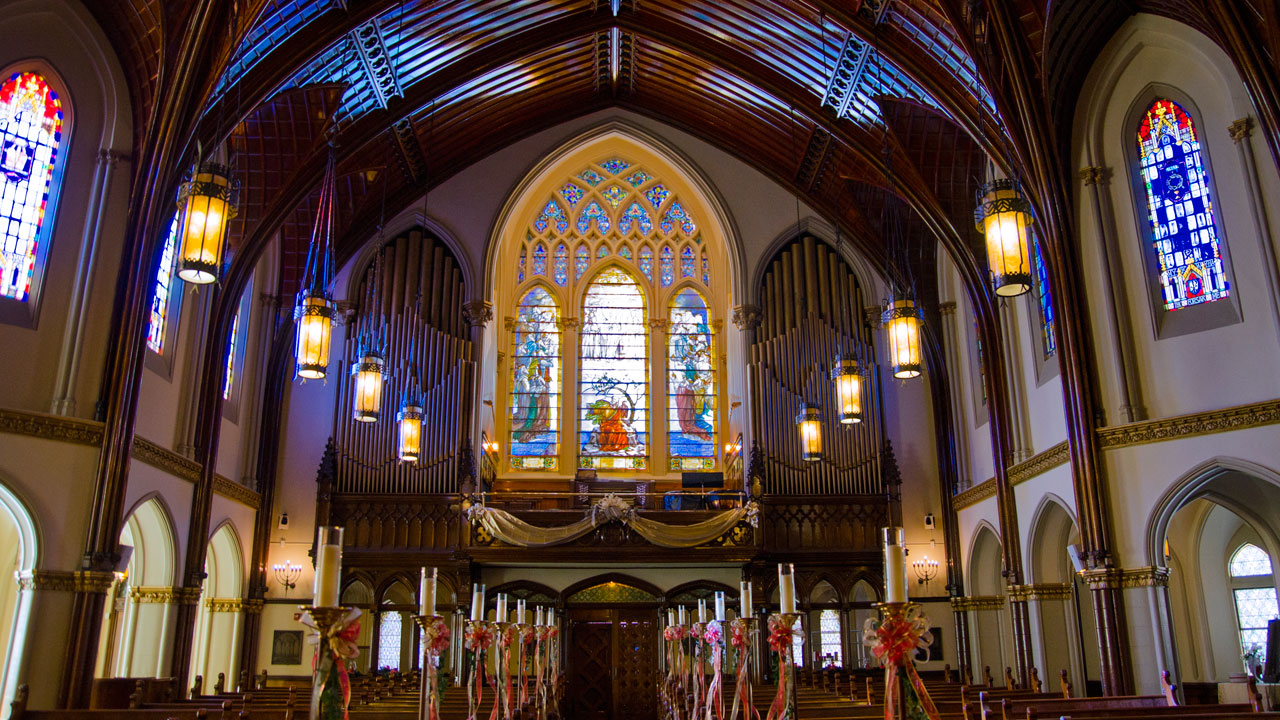The Historic Pipe Organs

The "Farrand & Votey" Organ 1895
Calvary's Farrand & Votey organ was restored from the ground up by Brian Burns, Calvary's own music director. The organ, designated as Op. 734, represented a trend in American organ building to re-use existing materials in an environmentally friendly and musically sound manner. Calvary's organ was originally powered by water.
Sanctuary Organ Specification: Farrand & Votey Op. 734 c. 1895
| Great | Swell | Choir | Pedal | ||||
|---|---|---|---|---|---|---|---|
| 16' | Open Diapason | 16' | Lieblich Gedeckt | 8' | Geigen Diapason | 16' | Open Diapason |
| 8' | Open Diapason | 8' | Open Diapason | 8' | Melodia | 16' | Bourdon |
| 8' | Gamba | 8' | Stopped Diapason | 8' | Dolce | 16' | Lieblich Gececkt (swell) |
| 8' | Dopple Flute | 8' | Salicional | 4' | Rohr Flute | 8' | Cello |
| 4' | Octave | 8' | Vox Celeste | 2' | Piccolo | 32' | Contra Bombarde |
| 4' | Hohl Flute | 8' | Aeoline | 8' | Clarinet | 16' | Bombarde |
| 2 ⅔' | Octave Quint | 4' | Harmonic Flute | 8' | Bombarde | ||
| 2' | Super Octave | 4' | Gemshorn | ||||
| 8' | Trumpet | 2' | Flageolet | ||||
| III Cornet | |||||||
| 8' | Cornopean | ||||||
| 8' | Oboe | ||||||
| 8' | Vox Humana | ||||||

The "Lully" Chapel Organ 1890
The chapel organ was reconfigured, but the cabinetry is original to the room where the first service was held on Christmas Eve, 1893.
Chapel Organ Specification: Lulley, c. 1890
| Great | Swell | Pedal | |||
|---|---|---|---|---|---|
| 8' | Open Diapason | 8' | Bourdon | 16' | Bourdon |
| 8' | Bourdon | 8' | Gemshorn | 8' | Open Diapason |
| 4' | Octave | 4' | Bourdon | 4' | Octave |
| 2' | Bourdon | 2' | Principal | ||
| III Mixture | |||||
| Resources | |||||
| Diapason | 8', 4', 2' | ||||
| Bourdon | 16', 8', 4', 2' | ||||
| Gemshorn | 8' (tc- bourdon bass) | ||||
| Mixture III | |||||